2013: Top 10 BCRC Blog Articles
Of the 85 articles posted on the BCRC Blog in 2013 that offer production tips, add science-based perspective to issues and misconceptions in the media affecting cattlemen, and announce new beef, cattle and forage research results, these were the Top 10 most popular. Any surprises?
10. Retained Ownership and Feeder Basis
Guest Post by Brian Perillat, Canfax Manager/Senior Analyst
October 10, 2013
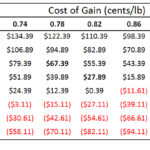
Although calf and feeder prices have been quite strong so far this fall, generally $5-$15/cwt stronger than a year ago, a bullish tone in the cattle futures markets and a bearish tone in the feed market has producers looking at the opportunity to background or retain ownership of their calves.
With any venture of feeding calves, whether they are bought or raised, the potential rewards must be weighed against the risks, while keeping in mind that strategies exist to reduce overall risk exposure. Continue reading…
9. The future of beef research in Canada
November 4, 2013
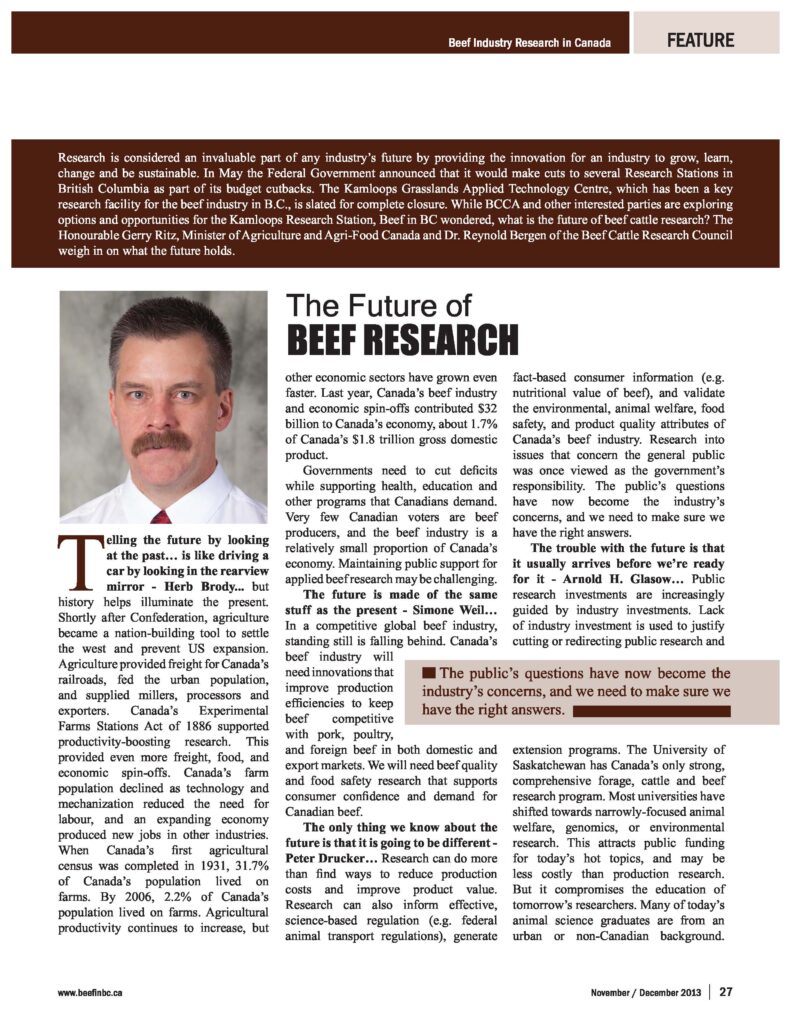
Telling the future by looking at the past… is like driving a car by looking in the rear-view mirror – Herb Brody… but history helps illuminate the present. Shortly after Confederation, agriculture became a nation-building tool to settle the west and prevent US expansion. Agriculture provided freight for Canada’s railroads, fed the urban population, and supplied millers, processors and exporters. Canada’s Experimental Farms Stations Act of 1886 supported productivity-boosting research. This provided even more freight, food, and economic spin-offs. Canada’s farm population declined as technology and mechanization reduced the need for labor, and an expanding economy produced new jobs in other industries. When Canada’s first agricultural census was completed in in 1931, 31.7% of Canada’s population lived on farms. Continue reading…
8. Try these weaning techniques for more productive calves this fall
September 24, 2013
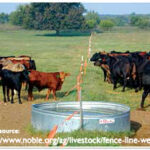
It won’t be long before it’s time to wean calves so that cows can head into winter in good body condition. The abrupt separation of calves from their dams is the most common approach to weaning, but it’s also the most stressful, and calves that experience a lot of stress underperform.
It’s easy to see why weaning is stressful on calves; sudden deprivation of milk and social contact with mothers, being handled for vaccinations, changes to feed and water sources, and transportation to a different environment with unfamiliar pen mates is a lot for young animals to cope with. The stress calves experience through weaning depresses their immune systems, making freshly weaned calves the most susceptible to bovine respiratory disease (BRD) infections. Stressed calves also have lower feed intakes. Listening to their bawling, seeing them pace in their pens and dealing with sick calves is no doubt stressful on producers too. Continue reading and watch videos…
7. Trends in consumer perceptions about beef
November 28, 2013

This Country Called Agriculture, a television show focused on agribusiness topics in Canada, recently aired an episode focused on trends in consumer perceptions about beef. Host Rob Eirich interviewed BCRC’s Science Director Dr. Reynold Bergen on a number of issues related to the production and food safety of Canadian beef.
The first of four segments responds to common perceptions about the food safety and nutrition of beef, and begins a discussion about antibiotic use in cattle. Continue reading and watch the episode…
6. Mentorship opportunities for beef researchers
December 2, 2013

Engaging researchers who study cattle, beef, genetics, feed or forage production with the Canadian beef cattle industry is mutually beneficial; it allows researchers to be better informed of industry needs and more likely to share their findings with a practical, solution-based focus. Facilitating and encouraging their attendance to industry events and networking with industry professionals, especially for new beef researchers from non-agriculture backgrounds, is extremely valuable. The following two programs offer just that. Continue reading…
5. Using new ideas and technology in the beef industry: video
December 11, 2013
Innovative ideas and technologies that can be used by beef producers are coming out all the time. Research is key to driving competitiveness so governments and industry groups make significant investments to continually find better and more efficient methods of producing high quality beef and cattle.

But to realize the benefits of those research efforts, producers and other industry players must be aware and take advantage of the new knowledge and tools that make sense for their operations. Extension and technology transfer services are critically important. Being informed and adopting innovation improves production efficiencies and beef demand, helping to make individual farms and the industry as a whole more profitable. Continue reading and watch video…
4. Q&A on conventional production of Canadian beef
September 26, 2013
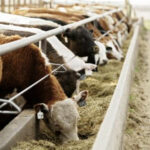
Do growth promoting, antimicrobial or other veterinary drugs affect the food safety of Canadian beef? Veterinary drugs are regulated by the Food and Drugs Act and Regulations. All veterinary drugs go through a Health Canada approval process before they are licensed for use. The Health Canada Veterinary Drug Directorate (VDD) evaluates and monitors the safety, quality and effectiveness, and sets standards for the use of veterinary drugs to ensure that, when used according to label directions, they are safe for both animals and humans. Continue reading…
3. Denmark shows impact of banning growth promoting antimicrobial use in cattle
November 14, 2013
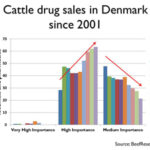
Antimicrobial resistance has become a highly charged issue. Headlines appear in the news on a regular basis suggesting that antibiotics are becoming less effective in humans and farmers are to blame.
Some concerns have been raised that antimicrobial use in livestock leads to antimicrobial resistance and that some of the products used in food animals are closely related to antimicrobials that are important in human health. It’s also been questioned whether antimicrobial resistance can be transferred among bacteria, which may reduce effectiveness of drugs used in human medicine. Continue reading…
2. Explaining Growth Promotants Used in Feedlot Cattle
January 14, 2013
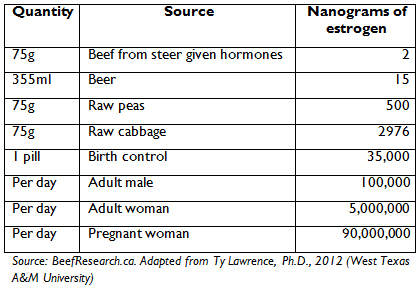
Feed efficiency in cattle can make or break profitability in the feeding sector, and has environmental implications. The costs of buying a calf and the feed needed to finish it are the two largest variable expenses facing the beef cattle feeding sector. Feed costs are higher than ever because of poor growing conditions in major grain producing countries, because of the use of feed grains in ethanol production, and because of increasing competition of land for crop production versus urban development. Continue reading…
1. Bigger is not always better: finding the right sized cow
Guest post by Karin Schmid, Beef Production Specialist with the Alberta Beef Producers
November 22, 2013
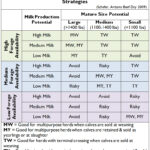
Marketing cows because they are open, calved late, or their conformation is breaking down are easy decisions. Marketing cows or retaining heifers based on productive efficiency definitely requires more thought.
Biological efficiency is not always the same as economic efficiency. In a cattle production system, efficiency is often a combination of those two measures. How we optimize efficiency will depend on:
- the genetic potential of the cowherd,
- the environment in which the cattle are raised, and
- the marketing strategy utilized by the producer. Continue reading…
Any requests for 2014?
We’re working hard to make BeefResearch.ca interesting and useful to you and your operation, but we need to hear from you. Feedback helps us deliver the information cow-calf producers, feedlots, veterinarians, meat packers and other industry players across the country need to make informed decisions to profitably and responsibly produce top quality Canadian cattle and beef. Don’t hesitate to ask questions and make comments in the box below or email us at info@beefresearch.ca.
More on BeefResearch.ca
Remember there is more than just blog articles on BeefResearch.ca! Take a look at overviews and videos on all kinds of topics, or summaries of individual research activities. To raise your beef IQ, start by clicking one of these:
- animal health and welfare
- beef quality
- environment
- feed grains and feed efficiency
- food safety
- forage and grasslands
- other topics
Related
Top 5’s on BeefResearch.ca
BCRC Blog | August 8, 2013
Click here to subscribe to the BCRC Blog and receive email notifications when new content is posted.
The sharing or reprinting of this BCRC Blog article is welcome and encouraged. Please provide acknowledgement to the Beef Cattle Research Council, list the website address, www.BeefResearch.ca, and let us know you chose to share the article by emailing us at info@beefresearch.ca.
We welcome your questions, comments and suggestions. Contact us directly or generate public discussion by posting your thoughts below.